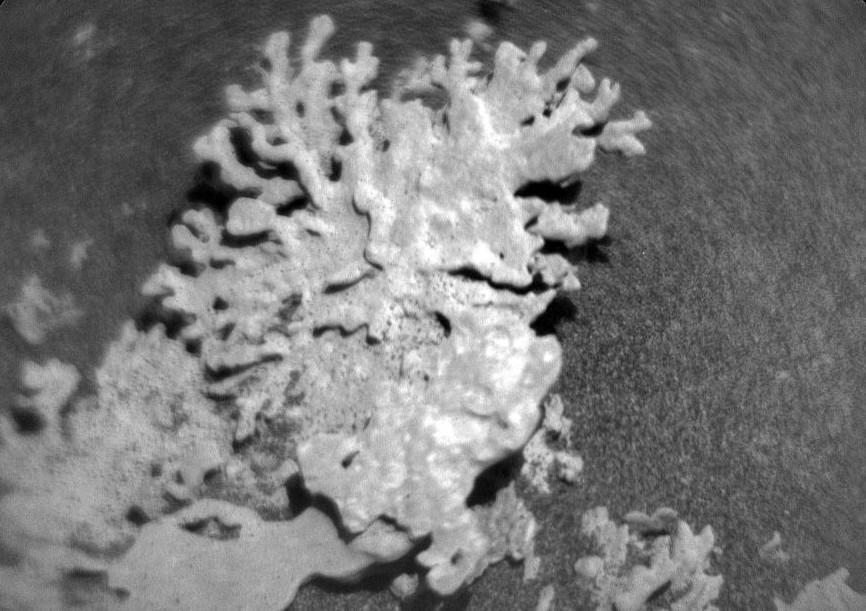
Coral-shaped rock spotted on Mars, NASA shares pic
NASA’s Curiosity Mars rover has made yet another fascinating discovery on the Martian surface. The rover, which has been exploring Mars since 2012, has sent back black and white images of a rock that bears an uncanny resemblance to a piece of coral. The rock was found in the Gale Crater, a large impact basin on Mars, and is estimated to be around a billion years old.
The images of the coral-shaped rock were captured by Curiosity’s ChemCam, a laser-induced breakdown spectroscopy (LIBS) instrument that is used to analyze the chemical composition of rocks and soils on Mars. ChemCam is a powerful tool that allows scientists to study the Martian geology in unprecedented detail, and it has provided invaluable insights into the planet’s history and evolution.
The coral-shaped rock is located in the Murray formation, a geological layer that dates back to around 3.5 billion years ago. During this time, Mars was a much more hospitable place than it is today, with liquid water flowing on its surface and a thick atmosphere that could support life. The rock is believed to have formed in this ancient environment, and its coral-like shape is likely the result of a combination of geological processes that occurred over millions of years.
The discovery of the coral-shaped rock is an exciting one for scientists, as it provides evidence of the complex geological history of Mars. The planet’s surface is characterized by a series of impact craters, canyons, and volcanic features, which were formed through a combination of tectonic activity, volcanic eruptions, and meteorite impacts.
The coral-shaped rock is just one of many fascinating features that Curiosity has discovered on its journey across the Martian surface. The rover has explored a wide range of geological formations, including ancient lake beds, riverbeds, and deltas. It has also discovered evidence of past water activity on Mars, including ancient riverbeds and lakes, and has even found evidence of a long-lost Martian ocean.
The discovery of the coral-shaped rock is also significant because it provides evidence of the planet’s ancient habitability. Mars was once a much more hospitable place than it is today, with a thick atmosphere and liquid water flowing on its surface. The presence of a coral-shaped rock on the Martian surface suggests that the planet may have had a complex ecosystem, with a variety of plants and animals living on its surface.
The discovery of the coral-shaped rock is just the latest in a series of exciting discoveries made by Curiosity on its journey across the Martian surface. The rover has been exploring Mars since 2012, and has made a wide range of important discoveries, including evidence of past water activity, ancient rivers, and even evidence of a long-lost Martian ocean.
The coral-shaped rock is just one of many fascinating features that Curiosity has discovered on its journey across the Martian surface. The rover has explored a wide range of geological formations, including ancient lake beds, riverbeds, and deltas. It has also discovered evidence of past water activity on Mars, including ancient riverbeds and lakes, and has even found evidence of a long-lost Martian ocean.
The discovery of the coral-shaped rock is a reminder of the incredible diversity of geological features that exist on Mars, and the many mysteries that still remain to be solved. As Curiosity continues its journey across the Martian surface, it is likely to make many more exciting discoveries, and provide valuable insights into the history and evolution of the Red Planet.
Source:
https://www.jpl.nasa.gov/images/pia26634-curiositys-chemcam-views-a-rock-shaped-like-coral/






